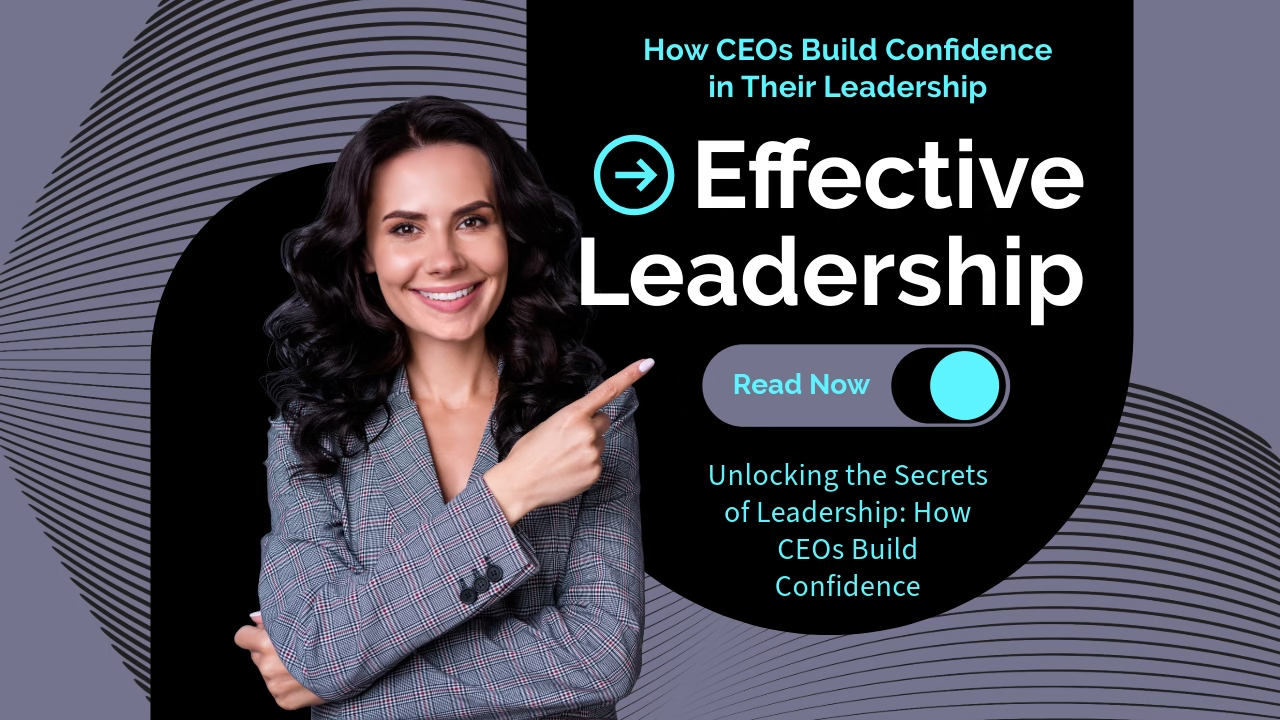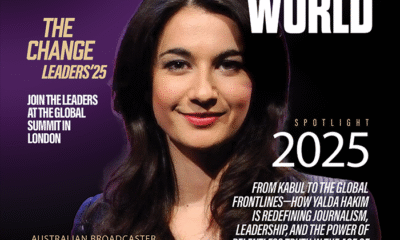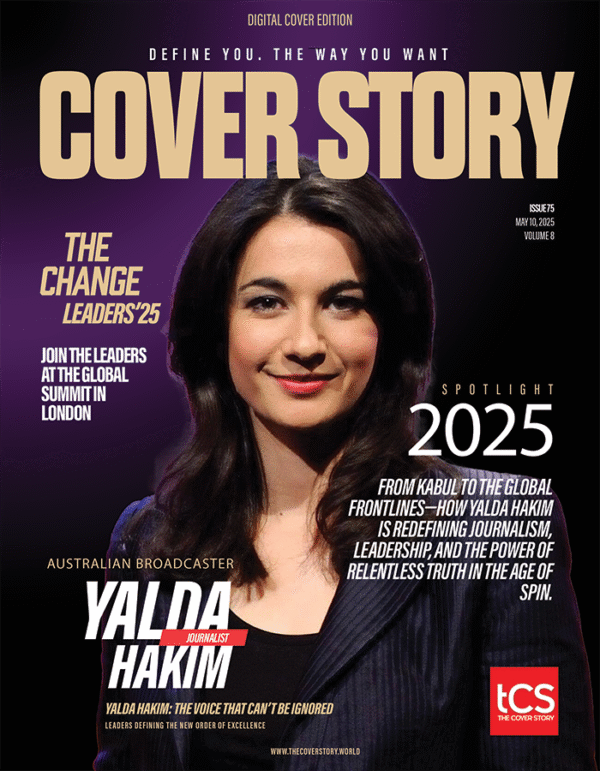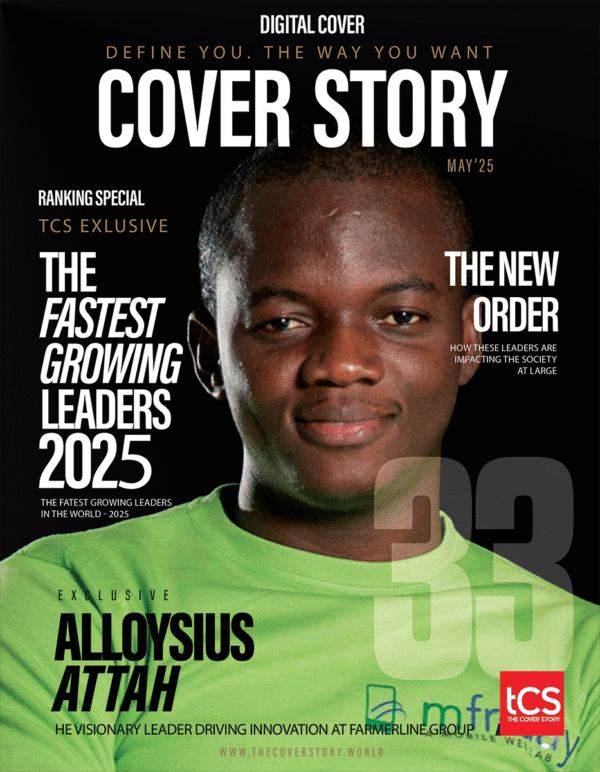Trends Story
Unlocking the Secrets of Leadership: How CEOs Build Confidence


Effective leadership is a cornerstone of successful organizations, and CEOs play a pivotal role in shaping the direction and success of their companies. Building confidence as a leader is a crucial skill that can have a significant impact on a company’s performance and culture. This article delves into the strategies and approaches CEOs use to boost their confidence and lead with authority.
The journey to becoming a confident leader involves several key elements. From developing a deliberate leadership approach to fostering a strong team and organizational culture, CEOs must navigate various challenges. Effective stakeholder management and clear communication are also vital components of confident leadership. By exploring these aspects, this article aims to shed light on how top executives build and maintain the confidence needed to drive innovation and success in today’s competitive business landscape.
The Two-Year Confidence-Building Journey
The journey to becoming a confident CEO is not a sprint but a marathon, often taking up to two years to fully develop. This process involves navigating various challenges and learning to balance immediate pressures with long-term goals.
Debunking quick-win myths
Many new CEOs feel pressured to deliver quick wins, leading them to launch multiple initiatives without securing proper alignment. One CEO we worked with wanted to fill two key positions before engaging his top team. He estimated the search would take two to three months. However, the process dragged on unexpectedly, and another executive left during this time, creating an additional vacancy. This delay cost the CEO valuable time and made him appear ineffective and indecisive.
The reality is that the race CEOs are running is not a sprint but a marathon. It requires patience, endurance, and a sustainable long-term strategy. Time is on the side of those who understand this concept. Going slow to go fast allows leaders to steady their efforts and helps others develop faith in their leadership.
Understanding stakeholder skepticism
New CEOs face unique challenges in building confidence, especially those promoted from within the organization. While they benefit from existing relationships, they must also convince former peers and colleagues of their ability to lead the entire enterprise.
One CEO, who had spent much of his career with his company, faced this challenge when he stepped up from CFO to CEO. To address this, he actively shared more about himself and his personal life, opening up about his weekends and personal challenges, such as his child’s severe illness. He believed this approach would show his human side, rally his team, and build trust within the organization.
The path to genuine support
To build genuine support and confidence, CEOs need to set a deliberate pace. This approach involves:
- Recognizing the long-term nature of the role
- Aligning stakeholders on expectations
- Addressing organizational challenges systematically
Mahesh, a new CEO at Bacardi, exemplified this approach. After spending 20 years at the company and following several short-tenured CEOs, he recognized that Bacardi faced instability, lacked a long-term strategic outlook, and had a culture misaligned with its stated values.
To address these issues, Mahesh took the following steps:
- He made it clear to all stakeholders – the board, the ownership family, and the company – that he intended to be in the role for 10 years.
- He set expectations that these years would be the best the company had ever seen.
- By framing his tenure as a long-term commitment, he freed himself from immediate time pressures.
This deliberate approach allowed Mahesh to focus on addressing the company’s fundamental issues without succumbing to the pressure for quick wins. It also gave stakeholders confidence in his leadership and commitment to the company’s long-term success.
By understanding the two-year confidence-building journey, new CEOs can avoid common pitfalls and set themselves up for long-term success. This approach involves debunking quick-win myths, addressing stakeholder skepticism, and charting a path to genuine support through deliberate pacing and clear communication of long-term goals.
Crafting a Deliberate Leadership Approach
Pacing Strategies for New CEOs
New CEOs often face immense pressure to deliver quick wins and make an immediate impact. However, this approach can backfire, leading to hasty decisions and misaligned initiatives. The key to successful leadership lies in setting a deliberate pace that allows for thoughtful planning and execution.
One CEO’s experience highlights the pitfalls of rushing into action. He aimed to fill two key positions before engaging his top team, estimating a two to three-month timeline. Unfortunately, the process dragged on, and another executive departed, creating an additional vacancy. This delay cost valuable time and made the CEO appear ineffective and indecisive.
To avoid such situations, new CEOs should recognize that their role is not a sprint but a marathon. This mindset shift has an impact on their approach to leadership and helps build confidence over time.
Balancing Action and Patience
Striking the right balance between taking action and exercising patience is crucial for new CEOs. While it’s essential to demonstrate leadership and drive change, it’s equally important to take the time to understand the organization, align stakeholders, and develop a sustainable strategy.
CEOs who hit the ground running at full sprint often launch multiple initiatives without securing proper alignment from the board, leadership team, or other key stakeholders. This approach can lead to confusion, resistance, and ultimately, failure.
Instead, CEOs should adopt a “go slow to go fast” mentality. This approach involves:
- Taking time to assess the organization’s current state
- Building relationships with key stakeholders
- Developing a clear, long-term vision
- Aligning the team around shared goals
- Implementing changes strategically and systematically
By pacing themselves, CEOs can steady their efforts and help others develop faith in their leadership. This approach also allows for more thoughtful decision-making and better execution of initiatives.
Creating a Sustainable Leadership Style
Developing a sustainable leadership style is essential for long-term success as a CEO. This involves crafting an approach that aligns with the organization’s needs, the CEO’s strengths, and the expectations of various stakeholders.
Mahesh, a new CEO at Bacardi, provides an excellent example of creating a sustainable leadership style. After spending 20 years at the company and following several short-tenured CEOs, he recognized that Bacardi faced instability, lacked a long-term strategic outlook, and had a culture misaligned with its stated values.
To address these issues and create a sustainable leadership approach, Mahesh took the following steps:
- He communicated a long-term commitment, stating his intention to be in the role for 10 years.
- He set clear expectations, promising that these years would be the best the company had ever seen.
- By framing his tenure as a long-term commitment, he freed himself from immediate time pressures.
This deliberate approach allowed Mahesh to focus on addressing the company’s fundamental issues without succumbing to the pressure for quick wins. It also gave stakeholders confidence in his leadership and commitment to the company’s long-term success.
For CEOs promoted from within the organization, creating a sustainable leadership style may involve additional challenges. They must convince former peers and colleagues of their ability to lead the entire enterprise. One CEO, who stepped up from CFO to CEO, addressed this by actively sharing more about himself and his personal life. He opened up about his weekends and personal challenges, such as his child’s severe illness, believing this approach would show his human side and build trust within the organization.
By crafting a deliberate leadership approach that balances action with patience, sets a sustainable pace, and aligns with the organization’s needs, CEOs can build confidence over time and position themselves for long-term success.
Building a Strong Foundation: Team and Culture
Building a strong foundation for leadership involves assembling the right team and fostering a supportive culture. These elements are crucial for a CEO’s success and confidence-building journey.
Assembling the right leadership team
One of the primary tasks for a new CEO is to build a capable and aligned leadership team. This process can be challenging and time-consuming. A new CEO we worked with wanted to fill two key positions before engaging his top team with his objectives. He estimated the search would take two to three months. However, the process dragged on unexpectedly, and another executive left during this time, creating an additional vacancy. This delay cost the CEO valuable time and made him appear ineffective and indecisive.
This experience highlights the importance of setting realistic timelines and having contingency plans. CEOs should consider:
- Prioritizing key positions
- Developing internal talent
- Creating a robust succession plan
- Balancing team-building with other strategic initiatives
Addressing cultural challenges
CEOs often face unique cultural challenges, especially when promoted from within the organization. They must convince former peers and colleagues of their ability to lead the entire enterprise. This transition can be particularly challenging for long-term employees stepping into the CEO role.
One CEO, who had spent much of his career with his company, faced this challenge when he stepped up from CFO to CEO. To address this, he took a proactive approach:
- He actively shared more about himself and his personal life
- He opened up about his weekends and personal challenges
- He discussed sensitive topics, such as his child’s severe illness
By showing his human side, he aimed to rally his team and build trust within the organization. This approach demonstrates the importance of authenticity and vulnerability in leadership.
Fostering a supportive work environment
Creating a supportive work environment is essential for building confidence and driving success. CEOs should focus on:
- Encouraging open communication
- Promoting collaboration across departments
- Recognizing and rewarding employee contributions
- Providing opportunities for professional growth and development
A supportive work environment helps to align the organization’s culture with its stated values. This alignment is crucial for long-term success and stability.
When Mahesh became CEO at Bacardi, he recognized that the company faced instability, lacked a long-term strategic outlook, and had a culture misaligned with its stated values. To address these issues, he took a deliberate approach:
- He communicated a long-term commitment, stating his intention to be in the role for 10 years
- He set clear expectations, promising that these years would be the best the company had ever seen
- He focused on addressing fundamental issues rather than pursuing quick wins
By taking this approach, Mahesh freed himself from immediate time pressures and could focus on building a strong foundation for the company’s future success.
In conclusion, building a strong foundation through team and culture is a critical aspect of a CEO’s confidence-building journey. It requires careful consideration of team composition, addressing cultural challenges, and fostering a supportive work environment. By taking a deliberate approach and focusing on these key areas, CEOs can set themselves and their organizations up for long-term success.
Effective Stakeholder Management
Effective stakeholder management is a critical aspect of a CEO’s role in building confidence and driving organizational success. It involves navigating complex relationships, aligning diverse expectations, and fostering trust across various groups within and outside the company.
Prioritizing key relationships
CEOs must identify and prioritize key stakeholder relationships to manage their time and resources effectively. These stakeholders typically include the board of directors, executive team members, employees, customers, and investors. By focusing on these critical relationships, CEOs can build a strong foundation for their leadership.
One new CEO’s experience highlights the importance of prioritizing relationships. He wanted to fill two key positions before engaging his top team with his objectives. However, the search process took longer than expected, and another executive left during this time, creating an additional vacancy. This delay cost the CEO valuable time and made him appear ineffective and indecisive. To avoid such situations, CEOs should:
- Identify critical positions and relationships
- Develop contingency plans for unexpected departures
- Balance team-building efforts with other strategic initiatives
Tailoring engagement strategies
Different stakeholders require tailored engagement approaches. CEOs must adapt their communication and interaction styles to meet the unique needs and expectations of each group.
For CEOs promoted from within the organization, this can be particularly challenging. They must convince former peers and colleagues of their ability to lead the entire enterprise. One CEO, who stepped up from CFO to CEO after a long career with the company, addressed this challenge by:
- Actively sharing more about himself and his personal life
- Opening up about his weekends and personal challenges
- Discussing sensitive topics, such as his child’s severe illness
By showing his human side, he aimed to rally his team and build trust within the organization. This approach demonstrates the importance of authenticity and vulnerability in stakeholder engagement.
Managing diverse expectations
CEOs face pressure from various stakeholders, often with conflicting expectations. Managing these diverse expectations requires a delicate balance and a clear, long-term vision.
Mahesh, a new CEO at Bacardi, provides an excellent example of managing diverse expectations effectively. After spending 20 years at the company and following several short-tenured CEOs, he recognized that Bacardi faced instability, lacked a long-term strategic outlook, and had a culture misaligned with its stated values.
To address these issues and align stakeholder expectations, Mahesh took the following steps:
- He communicated a long-term commitment, stating his intention to be in the role for 10 years.
- He set clear expectations, promising that these years would be the best the company had ever seen.
- He made his intentions clear to all stakeholders – the board, the ownership family, and the company.
By framing his tenure as a long-term commitment, Mahesh freed himself from immediate time pressures and could focus on addressing fundamental issues. This approach allowed him to manage diverse expectations effectively and build confidence among stakeholders.
To manage stakeholder expectations successfully, CEOs should:
- Communicate a clear, long-term vision
- Set realistic expectations for short-term and long-term goals
- Regularly update stakeholders on progress and challenges
- Be transparent about decision-making processes
- Seek input and feedback from various stakeholder groups
By prioritizing key relationships, tailoring engagement strategies, and managing diverse expectations, CEOs can build strong stakeholder relationships that support their leadership and contribute to organizational success. This approach requires patience, adaptability, and a commitment to open communication, ultimately leading to increased confidence and effectiveness in the CEO role.
Communication as a Confidence-Building Tool
Effective communication plays a crucial role in building confidence for CEOs and establishing trust within their organizations. By developing a clear communication strategy, maintaining consistency across platforms, and adapting to feedback, leaders can strengthen their position and inspire confidence among stakeholders.
Developing a clear communication strategy
A well-defined communication strategy is essential for CEOs to convey their vision and objectives effectively. This strategy should encompass both internal and external communication channels, ensuring that all stakeholders receive consistent and timely information.
One new CEO’s experience highlights the importance of a clear communication strategy. He wanted to fill two key positions before engaging his top team with his objectives. However, the search process took longer than expected, and another executive left during this time, creating an additional vacancy. This delay cost the CEO valuable time and made him appear ineffective and indecisive. To avoid such situations, CEOs should:
- Communicate their priorities clearly from the outset
- Set realistic timelines for key initiatives
- Provide regular updates on progress and challenges
- Be transparent about decision-making processes
Consistency across all platforms
Maintaining consistency in communication across various platforms helps build credibility and trust. This is particularly important for CEOs who have been promoted from within the organization, as they face the challenge of convincing former peers and colleagues of their ability to lead the entire enterprise.
One CEO, who stepped up from CFO to CEO after a long career with the company, addressed this challenge by:
- Actively sharing more about himself and his personal life
- Opening up about his weekends and personal challenges
- Discussing sensitive topics, such as his child’s severe illness
By consistently sharing personal information across different communication channels, he aimed to show his human side and build trust within the organization. This approach demonstrates the importance of authenticity and vulnerability in leadership communication.
Adapting to feedback and change
CEOs must be willing to adapt their communication style based on feedback and changing circumstances. This flexibility is crucial for maintaining confidence and trust in leadership.
Mahesh, a new CEO at Bacardi, provides an excellent example of adapting communication to address organizational challenges. After spending 20 years at the company and following several short-tenured CEOs, he recognized that Bacardi faced instability, lacked a long-term strategic outlook, and had a culture misaligned with its stated values.
To address these issues, Mahesh adapted his communication approach by:
- Clearly stating his intention to be in the role for 10 years
- Setting expectations that these years would be the best the company had ever seen
- Communicating this long-term commitment to all stakeholders – the board, the ownership family, and the company
By framing his tenure as a long-term commitment, Mahesh freed himself from immediate time pressures and could focus on addressing fundamental issues. This adaptive communication strategy allowed him to build confidence among stakeholders and align the organization around a shared vision.
To effectively use communication as a confidence-building tool, CEOs should:
- Develop a clear and comprehensive communication strategy
- Maintain consistency in messaging across all platforms
- Be open to feedback and willing to adapt their communication style
- Use personal anecdotes and experiences to build trust and authenticity
- Communicate long-term commitments and expectations clearly
By implementing these strategies, CEOs can leverage communication as a powerful tool to build confidence, inspire trust, and drive organizational success.
The Cover Story Verdict
Building confidence as a CEO is a journey that requires patience, strategic thinking, and effective communication. The path to becoming a truly confident leader involves crafting a deliberate approach, fostering a strong team and organizational culture, and managing diverse stakeholder expectations. By taking the time to understand their organization, align key players, and develop a clear, long-term vision, CEOs can set themselves up for lasting success.
Ultimately, the most effective CEOs recognize that their role is not a sprint but a marathon. They understand the importance of balancing immediate pressures with long-term goals and are willing to adapt their leadership style as needed. By embracing these principles and continuously working on their communication skills, CEOs can build the confidence necessary to lead their organizations through challenges and toward new heights.
To further enhance your leadership skills and make a global impact, consider applying for The Cover Story Global Impactful Leaders program.
to apply write to: info@thecoverstory.world
Business Story
U.S. Bank Announces Official Sponsorship of the 2026 Special Olympics USA Games

U.S. Bank Will Serve as the Official Volunteer Sponsor and Competitive Cheer Sponsor of the Games
As the Official Volunteer Sponsor, U.S. Bank will help lead and mobilize more than 10,000 incredible volunteers who are vital to the success of the Games. As the Official Competitive Cheer Sponsor, U.S. Bank will support this exciting event which will take place at Ridder Arena at the University of Minnesota campus. Competitive Cheer was introduced to the USA Games in 2022 featuring 150 athletes and Unified partners, and now more than 14,000 cheer athletes and Unified partners annually train and compete in the United States. “Hosting the Special Olympics USA Games here in our headquarters market of Minneapolis is such an honor,” said Reba Dominski, Senior Executive Vice President and Chief Social Responsibility Officer for U.S. Bank. “We are looking forward to showing these amazing athletes and their families just how supportive this community is and how excited we are to welcome them to the Twin Cities.” U.S. Bank joins a growing list of passionate partners for the 2026 Special Olympics USA Games. As a proud partner, U.S. Bank will also have many of its own employees playing a significant role in supporting the Games through volunteering at various venues and helping to champion inclusion throughout the Games. “We are deeply thankful for U.S. Bank’s collaboration in making the 2026 Special Olympics USA Games a reality,” said Christy Sovereign, Chief Executive Officer of the 2026 Special Olympics USA Games. “Their contribution empowers us to highlight the incredible human spirit, where competitive cheer and, most importantly, the tireless dedication of our many volunteers, will unite to celebrate the extraordinary abilities of our athletes.” The 2026 Special Olympics USA Games will be one of the largest sporting events in the U.S. that year, bringing together thousands of athletes of all abilities, coaches, volunteers and fans from all 50 states. To learn more about the 2026 Special Olympics USA Games, please visit 2026specialolympicsusagames.org.As the Official Volunteer Sponsor and Official Competitive Cheer Sponsor, U.S. Bank will help lead and mobilize over 10,000 volunteers and support the competitive cheer event at Ridder Arena on the University of Minnesota campus.

Business Story
Want AI-Driven Productivity? Redesign Work

To unlock AI’s full potential, leaders must rethink traditional job structures, embracing a comprehensive redesign of work processes that integrates human ingenuity with machine efficiency.
The Promise and Pitfall of AI Integration
Artificial Intelligence (AI) has emerged as a transformative force in the modern workplace, offering unprecedented opportunities for efficiency and innovation. However, merely overlaying AI onto existing workflows often yields limited benefits. To truly harness AI’s capabilities, organizations must fundamentally rethink and redesign work processes.
Deconstructing Work: Breaking Down Traditional Roles
The first step in this transformation involves deconstructing existing job roles into their constituent tasks. This granular analysis allows organizations to identify which tasks can be automated, which require human judgment, and which can be enhanced through AI collaboration. By understanding the specific components of each role, businesses can more effectively integrate AI where it adds the most value.
Redeploying Tasks: Aligning Work with the Right Resources
Once tasks are deconstructed, the next phase is redeployment—assigning tasks to the most appropriate resources. This might involve automating routine tasks, reallocating complex problem-solving to human experts, or creating hybrid roles where humans and AI systems work in tandem. Such strategic alignment ensures that each task is performed by the entity best equipped to handle it, optimizing efficiency and effectiveness.
Reconstructing Work: Building New Processes for a New Era
The final step is reconstructing work processes to reflect the new distribution of tasks. This involves designing workflows that seamlessly integrate AI tools, redefining job descriptions, and establishing new performance metrics. By rebuilding processes from the ground up, organizations can create agile, responsive systems that leverage the strengths of both human and artificial intelligence.
Embracing a Skills-Centric Approach
Central to this transformation is a shift from role-based to skills-based workforce planning. By focusing on the specific skills required for each task, organizations can more effectively match employees to roles, identify skill gaps, and develop targeted training programs. This approach not only enhances productivity but also empowers employees by aligning their work with their strengths and career aspirations.
Fostering a Culture of Continuous Learning
As AI continues to evolve, so too must the workforce. Organizations should cultivate a culture of continuous learning, encouraging employees to develop new skills and adapt to changing technologies. Providing access to training resources, promoting cross-functional collaboration, and recognizing adaptability as a key performance metric can help embed this culture throughout the organization.
Ensuring Ethical and Transparent AI Use
While integrating AI into work processes offers numerous benefits, it also raises ethical considerations. Organizations must ensure transparency in AI decision-making, protect employee data privacy, and address potential biases in AI algorithms. Establishing clear guidelines and oversight mechanisms is essential to maintain trust and integrity in AI-enhanced workplaces.
Conclusion: A Strategic Imperative for the Future
Redesigning work to integrate AI is not merely a technological upgrade; it’s a strategic imperative that requires thoughtful planning, cultural change, and ongoing commitment. By deconstructing traditional roles, redeploying tasks effectively, and reconstructing processes to align with modern capabilities, organizations can unlock new levels of productivity and innovation. Embracing this holistic approach positions businesses to thrive in an increasingly AI-driven world.
#AIProductivity
#WorkRedesign
#FutureOfWork
#HumanAIcollaboration
#DigitalTransformation
#SkillsBasedWorkforce
#ContinuousLearning
#EthicalAI
#WorkforceInnovation
#AIIntegration
Business Story
Remote Work Evolution: How Indian Corporates Are Redefining Workspaces

From shrinking office footprints to reimagined cultures, Indian companies are navigating the hybrid work frontier with innovation and intent.
The Great Reset: India’s Remote Work Awakening
In the aftermath of the pandemic, India’s corporate landscape has undergone a seismic shift. Remote work, once a contingency, has become a cornerstone of operational strategy. Companies across sectors are embracing hybrid models, blending in-office and remote work to foster flexibility and resilience.
This transformation is not merely logistical; it’s cultural. Organizations are re-evaluating traditional norms, prioritizing outcomes over hours, and trust over supervision. The emphasis is on empowering employees, fostering autonomy, and cultivating a results-driven ethos.
Redefining Real Estate: The New Office Paradigm
The shift towards remote work has prompted a reimagining of physical workspaces. Companies are downsizing traditional office spaces, opting for flexible layouts that accommodate collaboration and innovation. Hot-desking, co-working spaces, and satellite offices are becoming prevalent, reflecting a move towards agility and cost-efficiency.
This evolution extends beyond metros. Organizations are establishing hubs in tier-2 and tier-3 cities, tapping into diverse talent pools and reducing overheads. The decentralization of workspaces is fostering inclusivity and driving regional economic growth.

Productivity and Performance: The Hybrid Advantage
Hybrid work models are yielding positive outcomes in productivity and employee satisfaction. By offering flexibility, employees can tailor their work environments to suit individual preferences, leading to enhanced focus and efficiency. The reduction in commuting time contributes to better work-life balance, further boosting morale.
However, this model is not without challenges. Ensuring equitable access to resources, maintaining team cohesion, and preventing burnout require deliberate strategies. Organizations are investing in digital tools, virtual collaboration platforms, and mental health support to address these concerns.
Cultural Transformation: Building Trust and Inclusion
The remote work revolution is catalyzing a cultural metamorphosis within Indian corporates. Hierarchical structures are giving way to flatter, more collaborative frameworks. Leaders are adopting empathetic approaches, focusing on outcomes rather than micromanagement.
Inclusivity is at the forefront, with efforts to ensure that remote employees have equal opportunities for growth and recognition. Regular virtual engagements, transparent communication, and feedback mechanisms are instrumental in fostering a sense of belonging and purpose.
The Road Ahead: Embracing a Hybrid Future
As Indian corporates navigate the complexities of hybrid work, adaptability remains key. Continuous learning, technological integration, and employee-centric policies will define the success of this transition. By embracing change and prioritizing human capital, organizations can build resilient, future-ready work ecosystems.
#HybridWorkIndia
#RemoteWorkRevolution
#FutureOfWork
#WorkplaceTransformation
#DigitalWorkspaces
#EmployeeWellbeing
#FlexibleWorkModels
#OrganizationalCulture
#ProductivityInFocus
#InclusiveWorkplace
-

 Leaders Story6 months ago
Leaders Story6 months agoThe Cover Story World Best Leaders 2025, Yalda Hakim: The Voice That Can’t Be Ignored
-

 Business Story6 months ago
Business Story6 months agoAmrit Acharya: Building the Infrastructure of a New World
-

 Brand Story1 year ago
Brand Story1 year agoThe Best 30 Emerging Indian Brands: Innovators Shaping the Future
-

 Business Story6 months ago
Business Story6 months agoAI Integration in Indian SMEs: Revolutionizing Traditional Business Models
-

 Business Story6 months ago
Business Story6 months agoMAG Signs Strategic Partnership with MultiBank Group to Tokenize $3 Billion Real Estate Assets
-

 Business Story6 months ago
Business Story6 months agoRemote Work Evolution: How Indian Corporates Are Redefining Workspaces
-

 Business Story6 months ago
Business Story6 months agoEducation Technology: Bridging Learning Gaps in the Digital Age
-

 News Shots6 months ago
News Shots6 months agoWhat is the image of the Virgin Mary near the altar?









